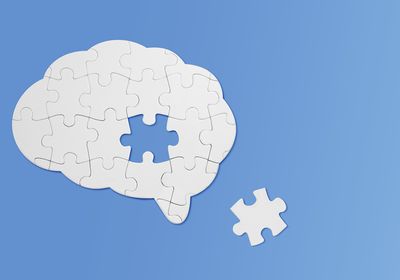ABOVE: Forgetting some details may be a normal process in the brain to adapt to new information. © iStock, fongfong2
Many people view forgetting as an inconvenience, and if it occurs extensively, they associate it with neurodegenerative diseases. However, some evidence suggests that nonpathological forgetting is an adaptive and active part of learning and memory maintenance.1
“The environment is changing, and to adapt to an environment that is constantly changing, we need to update our memories; and updating our memories also means forgetting,” said Livia Autore, a neuroscientist and postdoctoral researcher in the lab of Tomás Ryan at the Trinity College Dublin and author of a study published in Cell Reports.2 The findings indicate that forgetting is an active process that is important for the ability to remember and that it serves as a basis for understanding altered memory capacity.
The physical component of a memory consists of activated neurons and synapses formed during an event, collectively called an engram.3 To study changes in engram cells during forgetting, Autore’s team labeled neurons in the hippocampus with an adeno-associated virus cocktail that marked engrams formed during training experiences as well as all activated neurons during the testing phase.
Autore’s group then set up an object context training experiment in which mice explored one set of objects, for instance, a pair of small water bottles, in a chamber with a pattern of triangles on the wall to provide contextual information. An hour later, the researchers exposed the mice to a different pair of objects, like small statues, in a different chamber with striped walls as interference.
See Also "Asthma Drug Helps Mice Retrieve Memories “Lost” to Sleep Deprivation"

The day after the experiment, the team tested whether the interference affected the memory of the first object-context pair. They placed the mice in the first context chamber (triangle-printed walls) with one water bottle and one statue from the second context (striped walls). Mice that received interference after training explored both objects equally during the test session, whereas mice trained in the first context without interference explored the statue as a new object more.
These findings suggested that the interfering object-context exposure impaired memory in the mice. This coincided with less reactivation of engram cells in these animals. The team also showed that the original memory could be prompted with re-exposure to the first object-context pair, with more engram cells activated during this test, or by optogenetically activating the original memory.
Further experiments showed that for memory interference to occur, the neurons encoding the original memory had to be activated during the interfering events. When the researchers optogenetically inhibited the engram cells during the interference session, they noted animal behavior results similar to those in the experiments without interference.
“They demonstrated that even when a memory is forgotten, that it's actually still there; it's not actually gone,” said Jacob Berry, a neurobiologist at the University of Alberta who was not involved in the study. “It's almost like it gets demoted by the interference to a dormant stage. And then they show pretty elegantly that in that stage, they're able to either update, or they can actually rescue or revive, the memory.”
See Also "Distracted Brains Better at Parsing Unfamiliar Languages: Study"
Berry said that many of the findings aligned with his previous work in flies, but he added that the information that engrams needed to be activated for suppression to occur was new to the field. He is curious now about exploring the underlying mechanisms and investigating when and how the original memory is activated.
“We always suspected that maybe [memories] can be put into a dormant state and be revised, or changed, or brought back up,” Berry said. “To really see that at the engram cell level really helps confirm that, and I think it will open up the field to looking into what dormant memories are. What makes them different than a regular memory that's easily expressed? And I think those kinds of things can have impacts in understanding lots of disorders where there's a lot of forgetting.”
- Brea J, et al. A normative theory of forgetting: Lessons from the fruit fly. PLoS Comput Biol. 2014;10(6):e1003640.
- Autore L, et al. Adaptive expression of engrams by retroactive interference. Cell Rep. 2023;42(8):112999.
- Tonegawa S, et al. Memory engram cells have come of age. Neuron. 2015;87(5):918-931.


